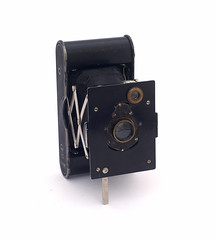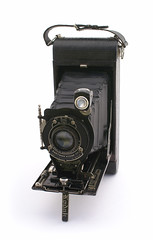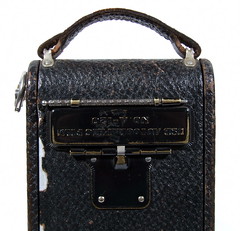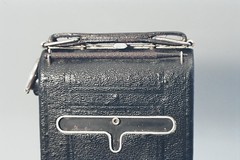Difference between revisions of "Autographic"
(Added missing attribution & rights to all pics; several ->CW pool; replaced problem pic; straightened out layout; made text agree with new pics; new link) |
m (1915 lady CP -> CW) |
||
| Line 17: | Line 17: | ||
}} | }} | ||
{{Flickr image | {{Flickr image | ||
| − | | image_source=http://www.flickr.com/photos/mario_groleau/5237134260/in/pool- | + | | image_source=http://www.flickr.com/photos/mario_groleau/5237134260/in/pool-camerawiki |
| image=http://farm6.static.flickr.com/5285/5237134260_ed03def979_m.jpg | | image=http://farm6.static.flickr.com/5285/5237134260_ed03def979_m.jpg | ||
| image_align=left | | image_align=left | ||
Revision as of 21:46, 31 August 2011
Glossary Terms

|
| Vest Pocket Autographic image by Steve Harwood (Image rights) |

|
| No. 1A Pocket Kodak image by Steve Harwood (Image rights) |

|
| The lady writes something onto her film image by Mario Groleau (Image rights) |
Autographic film allows the photographer to enter his own notes onto the negative. Comments are scratched into paper on the back of the film with a stylus and then exposed to the sun and burned onto the negative. The method was invented by H. J. Gaisman. Eastman Kodak purchased the rights in 1914 and produced Autographic film for 8 different negative sizes. They made a series of Autographic cameras and even replacement backs to adapt older cameras to use this feature. The form of the window can help you date the camera as Kodak produced three consecutive models in 20 years. Middle and later versions are shown below.

|
| Window and stylus No. 1 Autographic Kodak Jr. image by Süleyman Demir (Image rights) |

|
| Window of No. 1 Pocket Kodak image by Dries van den Elzen (Image rights) |